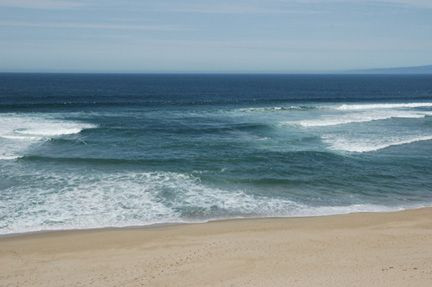What Is A Rip Current? Here's How They Form And How To Survive One

Everyone knows to use sunscreen and stay hydrated while at the beach. But if you’re making big plans this summer to head to the shore, make sure you also know what to do in case you encounter a rip current. While they won’t pull you under, they will pull you out to sea and make you tired. Rip currents are known as some of the most deadly beach conditions to threaten swimmers each year. But you can survive one if you know what to do when it pulls you out to sea.
Read: When Is The Best Time To Spot Sharks? 2 White Sharks Spotted At Jersey Shore and Delaware Beaches
What is a rip current?
Rip currents are made up of water that flows away from the shore at surf beaches, according to National Oceanic and Atmospheric Administration. They’re sometimes incorrectly referred to as rip tides or undertow. The currents begin close to the shore and extend through the surf zone out to where waves are no longer breaking. They can range in size: Some are skinny while others cover a much wider area of the water. Some are as narrow as 10 feet while others can be about 100 feet wide, according to NOAA.
How do rip currents form?
These currents form when waves break close to the shoreline. Water builds up between the waves and the beach and needs a way to get back to the ocean, so a rip current forms. They’re jet-like flows that run perpendicular to the shore. Some are slow, far too slow to pull someone out to sea, but the speed of the current can change quickly. They can form at any beach where there are breaking waves, so they can form in the Great Lakes as well as the ocean.
How to avoid rip currents:
Always check the water conditions are any beach you plan to visit. You can usually find this information online with the National Weather Service. Additionally, once you’re at the beach look for signs that say the current conditions or flags. You could also ask a lifeguard on duty, they’ll know the conditions and whether there is an area to avoid. You can also look at the water and scan for signs of a rip current. These signs include noticeable color differences in the water, a break in the wave pattern, foam or seaweed moving out to sea steadily and other signs.
Read: How Does Sunscreen Work And What The Numbers Mean? SPF Ratings And Facts
How to survive a rip current:
Swimming near a lifeguard is always important, as is knowing how to swim well. If you do find yourself in a rip current the key is not to panic and not to fight it, NOAA says. Floating is your best option and will use less energy than trying to swim against the current will. Never try to swim against the current. You won’t win. Instead, swim along the shoreline until you’re out of the current. Then you can swim at an angle back to shore.
© Copyright IBTimes 2025. All rights reserved.




















